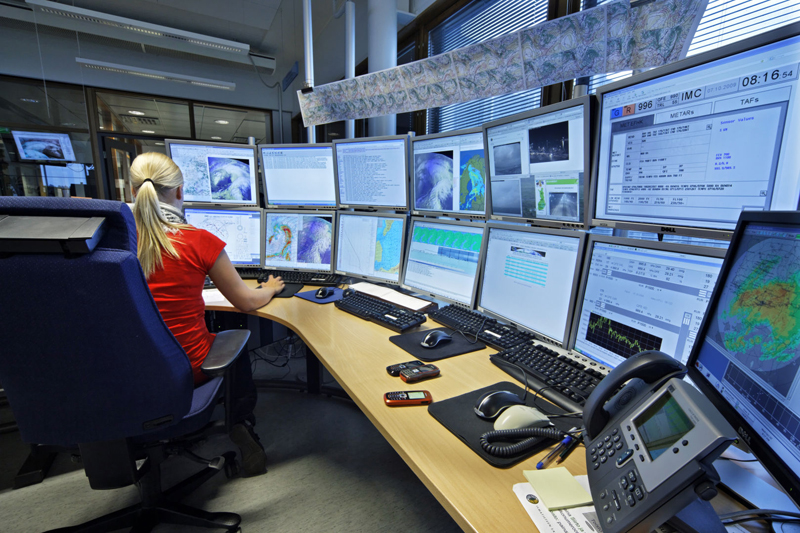WP2: Diagnostics and Predictions
WP2 provides precipitation and air quality forecasts, which are the primary source of data for the services to be developed in WP4. For the generation of the forecasts, existing nowcasting and forecasting models from the FMI will be incorporated into the CITYZER ecosystem. Observations obtained from WP1 are the primary data source for the models, although some auxiliary data sources may also be employed.
The precipitation nowcasts will be produced by the currently operational nowcasting model of the FMI. The model predicts precipitation by extrapolating measured weather radar data into future. The rainfall rate and accumulation can be predicted up to 3 h into future with high spatiotemporal resolution. The accuracy of localized precipitation forecasts is generally much superior to that of numerical weather prediction (NWP) models, because NWP models cannot explicitly predict small-scale weather phenomena such as convective precipitation. In addition, the temporal resolution of NWP forecasts is typically much coarser (e.g. 3 or 6 hours) compared to that of the nowcasting model (e.g. 5 minutes). The weather radar data obtained from the NM10 (WP1) are the input for the CITYZER precipitation nowcasts. The predictions provided are useful not only for warnings, but also for damage mitigation and recovery actions. The rainfall rate and accumulation predictions can be used as input for other systemic models and services, such as localized flooding or avalanche predictions, but the development of such tools will be performed by the users utilizing the services provided and based on this project.
The air quality forecasts will be provided by the FMI-ENFUSER environmental data fusion service developed at the FMI. The FMI-ENFUSER combines statistical air quality modelling, dispersion modelling and information fusion algorithms. In CITYZER, the FMI-ENFUSER version developed in the MMEA project will be used to provide air quality forecasts with good spatiotemporal resolution, but modified to account also for the nowcasting precipitation predictions in the air quality forecasts. The air quality sensor data obtained from WP1 will be used as input. In addition, meteorological data obtained from the WP1 sensor networks and NWP models will be employed. The AQ forecasts include predictions on the exposure of the inhabitants on pollutants, and enable the delivery of activity-based exposure information to citizens.
To assure good quality of the forecasts and stable running of the forecast models, the observational data will be diagnosed and, in necessary, filtered out prior to their use in the models. As WP2 mostly employ existing models, the work focuses on integrating them to the CITYZER ecosystem and its data structures.

Weather predictions in FMI. Photo: Anton Halas.